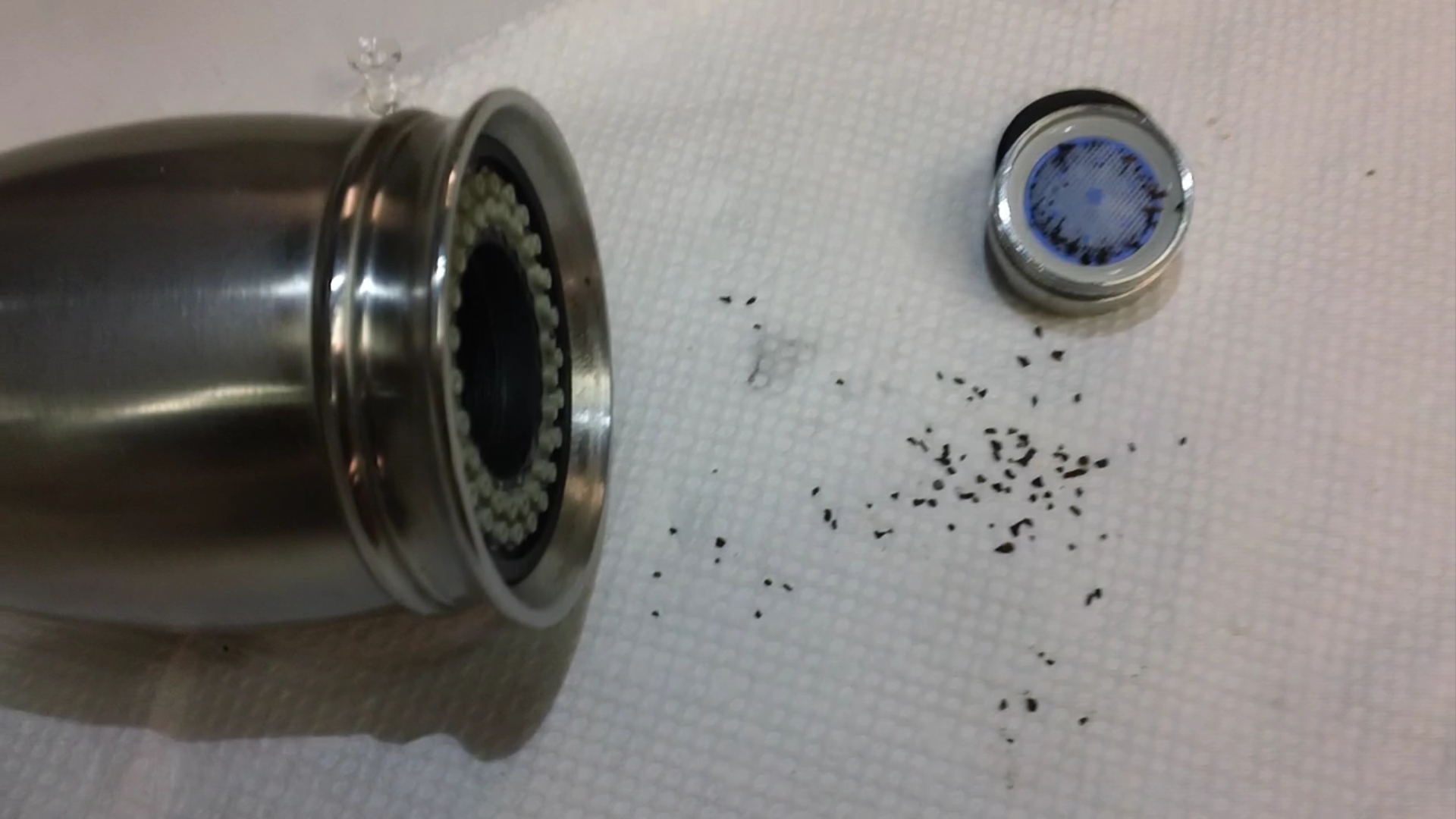
Solder from Piping in Cartridge

Debris in Aerator

Debris in Cartridge

Minerals from Water Built up on Spray Head
Debris or Minerals in your water supply can cause issues with your faucet.
A cartridge is the most important part of the faucet. It mixes the hot and cold water and turns the water on and off. A partially or fully blocked cartridge can cause several different issues including dripping, leakage at the base of the faucet or through the body down under the cabinet. It may cause only the hot or cold water to have low flow.
It is not difficult to replace a cartridge, but if you do not find the cause of the blockage replacing the cartridge may not be a permanent fix.
A block cartridge immediately after installation is usually the result of minerals built up in your plumbing braking up and coming lose from the walls of your piping when you disconnect you old faucet or sink. If the person installing your faucet does not thoroughly flush out these mineral particles out of the system before installing the new faucet, a blockage may occur. In the lower-left picture, you can see small particles that were in the aerator of the new faucet.
Debris can also come from installation or modification of your plumbing system such as new piping or replacing shut off valves. The two top images below show solder and shavings caught in the cartridge. In this case the homeowner had his valves replaced before installing the new faucet. You can see a piece of solder and the shavings from cutting the pipe in the photo.
Hard water is particularly hard on all faucets but Kitchen faucets because they have the most moving parts, have the longest water channel and used the most, are more likely to have issues. Water softeners DO NOT solve all mineral issues. Softeners remove much, but not all minerals and most systems are installed only on the hot water. If you need a softener, you may be more prone to issues. The lower-right photo below shows mineral build-up on the spray head of a Cygnet Faucet. While you see it on the exterior, it is also building up inside the faucet, and on the flow-to-spray switch.